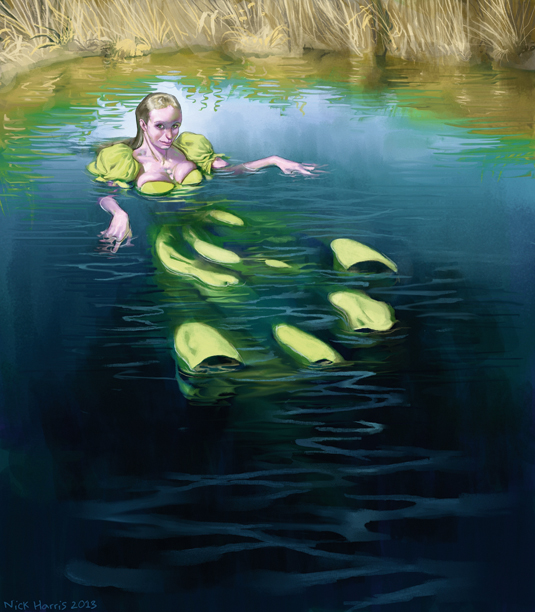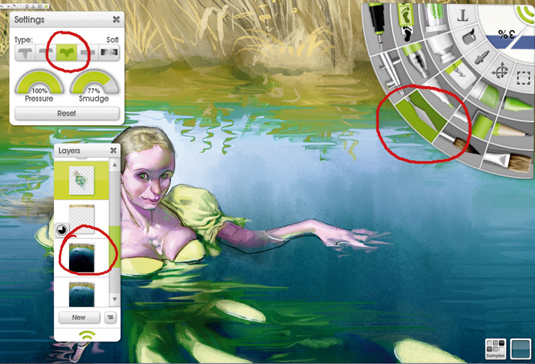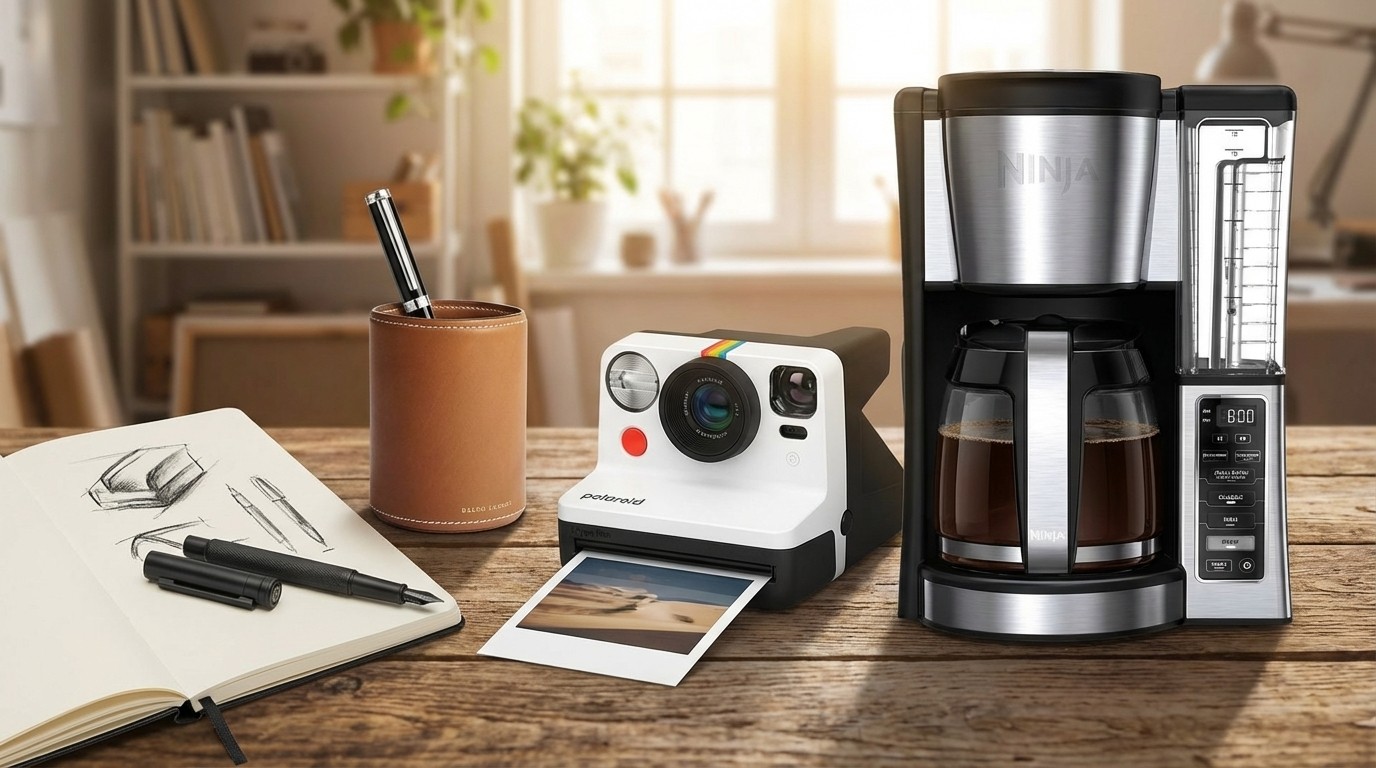The trick to painting someone half-submerged in water
With these tips and video tutorial, illustrator Nick Harris reveals how to paint wet!

A lot depends on the scenario you choose as to how the water will look. A choppy sea has a very different surface from a placid pond – I'm going with the latter here.
For a start, I choose a dress on my figure of a colour that contrasts with the dark tones of the water. I block in a dark-to-light gradient roughly with the oil brush in ArtRage on a layer beneath the one I paint the figure on.

Between the two, on another layer at the top of the composition, I block in a grassy bank. Refer to details added on this for mark making on the water layer, but don’t worry too much about strict accuracy.
Why? Because next I use the Smudge palette knife to drag the layer pixels left and right to create a zig-zag ripple effect.
You can do the same thing for reflections of the figure, but bear in mind that its reflectivity depends on the angle you regard water surface. Hint at shapes below the surface where the figure is submerged.
Words: Nick Harris
Nick Harris went digital in 2000 after 18 years working with traditional methods. He works mainly on children's illustrations. This article originally appeared in ImagineFX issue 94.
Daily design news, reviews, how-tos and more, as picked by the editors.
Like this? Read these...
- How to draw feather scales like a pro
- The secret to painting luscious lips
- Great examples of doodle art

The Creative Bloq team is made up of a group of art and design enthusiasts, and has changed and evolved since Creative Bloq began back in 2012. The current website team consists of eight full-time members of staff: Editor Georgia Coggan, Deputy Editor Rosie Hilder, Ecommerce Editor Beren Neale, Senior News Editor Daniel Piper, Editor, Digital Art and 3D Ian Dean, Tech Reviews Editor Erlingur Einarsson, Ecommerce Writer Beth Nicholls and Staff Writer Natalie Fear, as well as a roster of freelancers from around the world. The ImagineFX magazine team also pitch in, ensuring that content from leading digital art publication ImagineFX is represented on Creative Bloq.
